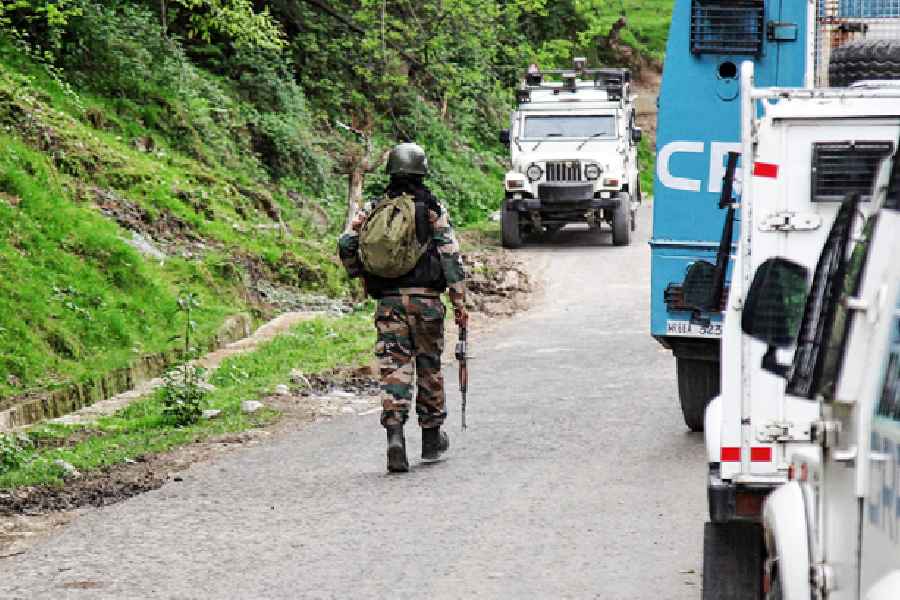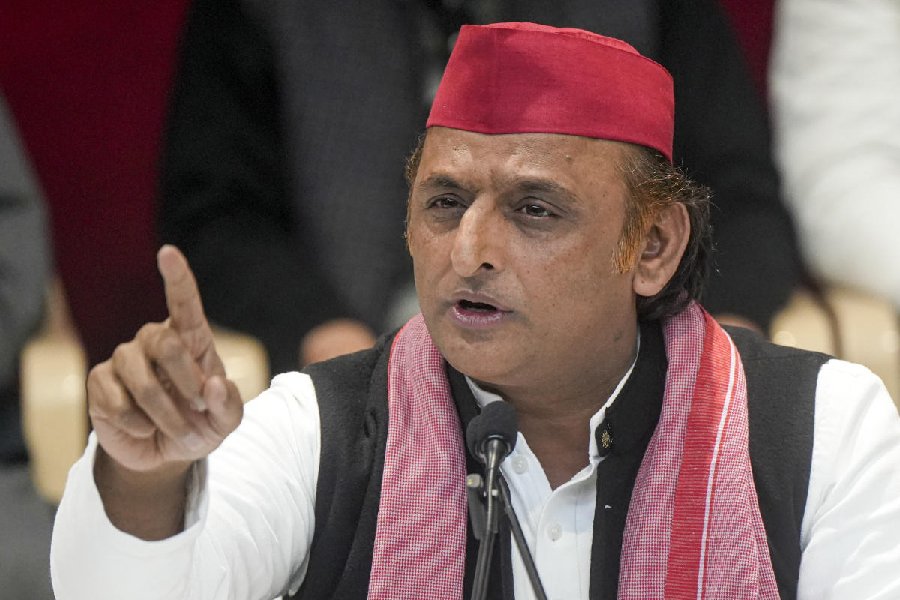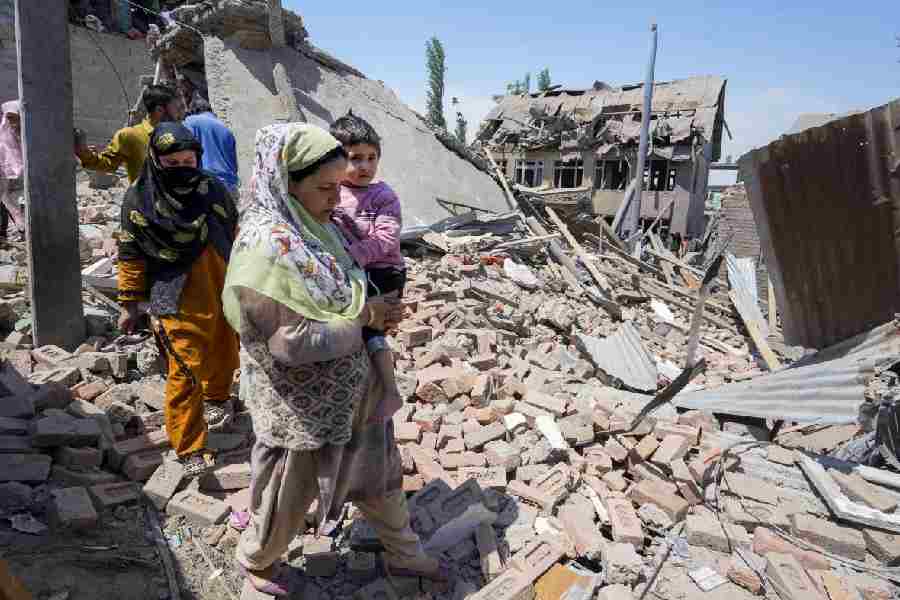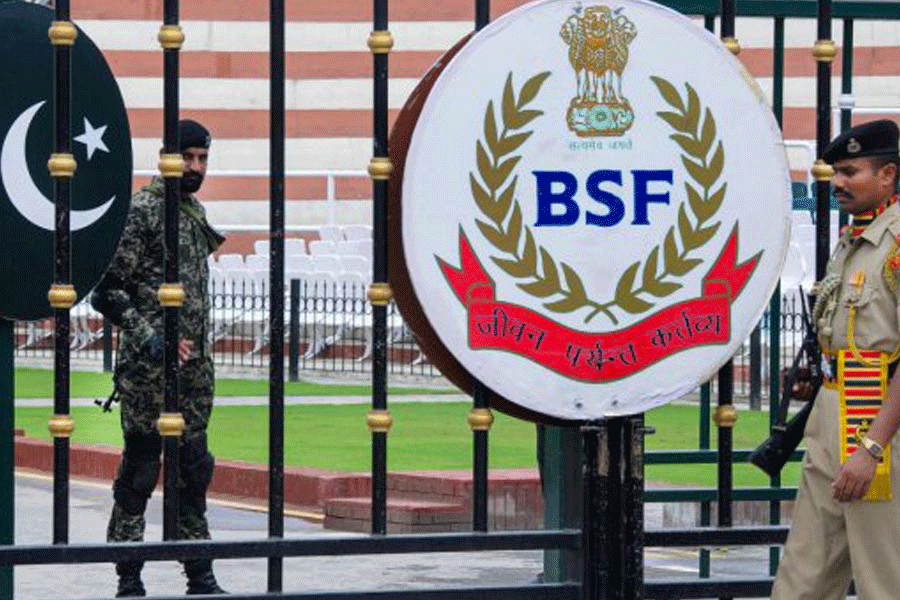|
|
| An arduous journey |
Part of the colonial enterprise involved keeping those back home informed of — if not titillated by —the raj at work. Accounts of various aspects of British rule in India became popular, some racy and exciting, narrated by skilled raconteurs, others more prosaic and factual: the social life of the colonizers, stories, real as well as fictional, of their adjustment to an extreme climate, alien culture, servants and so-called ‘native’ cunning and servility as well as memoirs by district officials, judges, lawyers and housewives were eagerly awaited. Poring over family photo albums, scrap books and journals provided for evenings of nostalgia and vicarious interest for those who remained at home. Newspaper articles on India that dealt not only with ‘hard’ news but also experiences of various kinds evidently had a committed readership. Though all authors may not have had the Kiplingesque touch, many had a story or two to tell.
Edwin Arnold, known best for The Light of Asia, his poetic rendering of the life and teachings of the Buddha, also wrote for the popular media. In 1856, he became the principal of the Deccan College at Poona (Pune) and a Fellow of Bombay University. When he left India in 1862, the academic-cum-journalist was proficient in Sanskrit, Persian, Arabic, and Turkish. In London, he soon joined The Daily Telegraph of which he was to become editor. Years later, he wrote an article in the paper about “A Real Thirst”, when, in 1860, he had ridden up from his home in Poona to the hill station of Mahabuleshwar (Mahabaleshwar), a distance “considerably over 100 miles by the Sattara [Satara] route”.
Arnold distinguished the thirst he experienced from “the very ordinary feeling that arises after hearty exercise”. What he had felt under the hot Indian sky was very different: “the want of something to moisten the parched throat and fill the dried and burning veins transcends all limit of wish or desire, and becomes an agony probably far keener than any arising from hunger”. As the railways had just about come to the country, the usual mode of travel to any distance for the likes of Arnold was by carriage or on horseback, both known as “laying a dak”. The carriage, of course, was “a rattle-trap vehicle” called a shigram — the sarcasm unmistakable in the use of a word that meant ‘swift’. A long journey on horseback involved meticulous planning ahead of time. A Parsi contractor in the bazaar who also dealt in horses would place animals along the way at a distance of 12 miles or ‘six koss’. Not particularly well-bred and “full of every kind of vice” (Arnold delicately avoids elucidating on these), they nevertheless did the job at an easy canter.
Choosing to do the first part of the journey on his own little Arab, Arnold was happy to take to his familiar saddle after “hard work at the College”. He observed the butterflies, a group of “seven brown sisters... green paroquets [sic]”, kites and vultures circling a-high. And then the cobra at home under a huge stone, near a temple, basking in the sun as he rode quietly by. Nobody would harm “the old grey snake, which I had often seen before, and passed by that afternoon as usual, not interfering with his harmless solitude”. The second shift was on a Deccan pony, and his role over, Mr Brown was led home by Arnold’s horse-boy or syce. Every change of pony was not stress-free as often the mounts resisted being saddled, kicking and biting in the process.
Despite the little-inhabited terrain, Edwin Arnold thought nothing of riding through the night as jackals stole “like shadows across the fields”. However, he had to slow down his pace as the route became steeper and more tortuous. Exhausted, he fell asleep on a grassy knoll, only to be awakened by a brilliant Indian dawn when the Dam-i-subh or the “breath of morning” swept by “like the sigh of the great earth turning and waking”. For some reason, Arnold had ventured forth on his journey with only a bottle of soda-water, and when he saw the gleam of the river Krishna far below, he felt sure he would get basics such as milk, eggs and, of course, water to slake his growing thirst. However, the area was in the grip of a cholera epidemic and rather than attend to his needs, desperate survivors asked him whether he was “a hakim, a vaidya, a doctor”. As he was none of these and had no medicines to offer, he rode on to the nearest dak bungalow. As he dismounted, his restless pony drove him against a post, shattering his precious bottle of soda water. There was no chowkidar in sight — he too had been a victim of the epidemic; though the river looked tempting, Arnold desisted as he knew that “every ripple... must have been full of cholera-germ”. With little option, he lay down on a charpoy till it was cool enough to ride on.
After almost a day had passed without a drink of water, Arnold experienced what he called “the second phase of thirst” when it was “a passion and a pain” to be without water. There was little option but to go on and as he did not quite know the way, he asked a peasant how he could get to Mahabuleshwar. A costly mistake, as the town was known as Malcom-Peth locally — and his guide sent him off to a temple, thinking that that is what Arnold was looking for: he was not wrong in doing so as a literal translation of Mahabuleshwar is “the place of the great Lord of Strength”. Two-and-a-half hours later the worthy professor was well and truly lost in a jungle where he “heard much too plainly for my comfort upon the left the sharp quick cough that tiger gives when he is calling to his mate”. He wearily entered a hut — only to recoil from a dead body on the charpoy. Back in the jungle, it was not possible to hunt even for fruit in the moonless night; his head ached, he was feverish, and with a throat “like blistered parchment”, Arnold’s desperation mounted.
Finally, he was fortunate enough to be discovered by a couple of wood-cutters on their way home; Arnold was barely able to explain his situation to them — but they understood enough to guide him to a bungalow where two men sat with a lamp and a table with glasses and beer-bottles. Unable to greet his “hosts”, the exhausted man pointed to his throat and the unopened bottle. As one of them poured the foaming liquid down his throat “every drop seemed a veritable elixir of life”. No names or greetings were exchanged between the men who only shook hands when they parted company; as Edwin Arnold headed off in the direction of his anxious friends, he concluded that to be as thirsty as he had been was quite enough for an entire lifetime. Yet, a vivid recounting of his thirst-filled anguish would have provided the smog-bound London reader a real-life adventure of sorts to dwell on. Bright sunshine, misted hill tops, a cobra, cholera-ridden bodies and perhaps a tiger lurking somewhere in that eerie night in an Indian jungle — could one ask for much more? And as all this was on horseback, Arnold’s article was bound to be an instant success among a people committed to equestrian pursuits — even if the steed in question was no more than a mangy hill pony.











